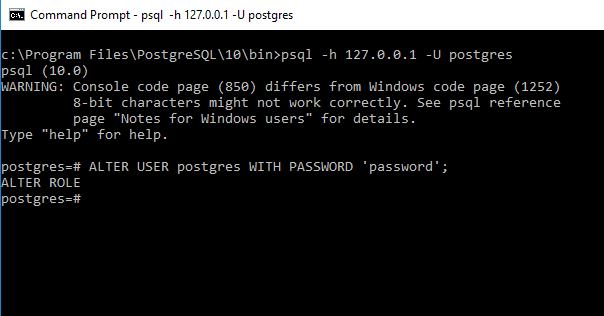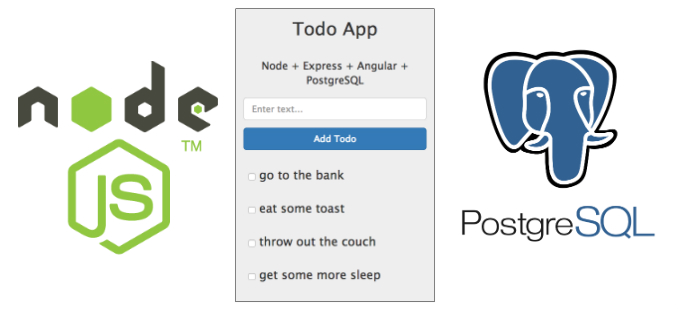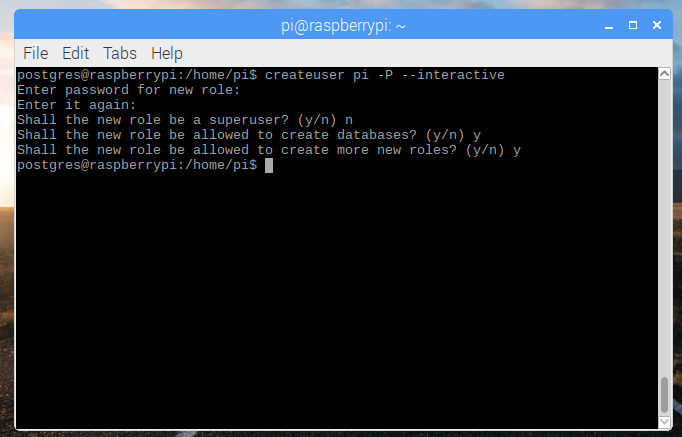Postgresql List Users Top 3 Different Users List In
Postgresql User Administration David Pashley Comdavid
See more videos for postgres user. You need to login as database super user under postgresql server. again the simplest way to connect as the postgres user is to change to the postgres unix user on the database server using su command as follows: su postgres user postgres. step 3: now connect to database server. type the following command $ psql template1 or $ psql -d template1 -u postgres output:.
How To Manage Postgresql Databases And Users From The
Creating user, database and adding access on postgresql.
Postgresqlusers that have permission to create databases can do so from their own accounts by typing the following command, where dbname is the name of the database to create: createdb dbname. adding an existing user to a database. to grant an existing user privileges to a database, follow these steps:. 1. user data in postgresql. all the user-related data is stored in the table named pg_user which belongs to the schema named pg_catalog. this table consists of all the information such as username, usesysid, usecreatedb, usesuper, userepl, usebypassrls, passwd, valuntil, and useconfig. To add a user you need to use a postgres user with the ability to add users (a superuser). in most cases this will be the postgres user, which is the initial superuser. the simplest way to connect as the postgres user is to change to the postgres unix user on the database server and take advantage of postgres’ ident based authentication. Postgres is the default user present in the postgresql database that is the superuser and has all privileges while payal user is created by me for demonstration purpose that does not postgres user has any privileges. we can check that by firing the following query.
Postgresql Documentation 8 0 Database Users And Privileges

Sql Give All Permissions To A User On A Postgresql
See full list on aws. amazon. com. You can monitor user activity by setting postgresql logging parameters available in the rds parameter groups. for example, you can set the log_connections and log_disconnectionsparameters to capture all new connections and disconnections. after setting these parameters in the parameter group, you will see the following messages in the log files: if you require more detailed session or object-level custom auditing information, then you can use the pgaudit extension. the steps to configure pgaudit with amazon rds and aurora postgresql are available in working with the pgaudit extension in the amazon rds user guide. increasing database logging does impact storage size, i/o use, and cpu use. because of this, it is important that you test these changes before deploying them in production. The folder c:\users\postgres will be the profile folder for a user named "postgres". but postgres is a large database management package. i don't know why a user of that name would be created by you. perhaps some software installation created it? i cannot know.

With postgresql, you can create users and roles with granular access permissions. the new user or role must be selectively granted the required permissions for each database object. this gives a lot of power to the end user, but at the same time, it makes the process of creating users and roles with the correct permissions potentially. Summary: in this tutorial, you will learn how to use the postgresql list user command to show all users in a postgresql database server.. listing users using the psql tool. first, connect to the postgresql database server using the postgres user:. However, you may create a new user or set a new password to the existing user. usually, you can login as the postgres user: open a terminal and do sudo su postgres. now, after entering your admin password, you are able to launch psql and do. create user yourname with superuser password 'yourpassword'; this creates a new admin user. Jan 30, 2019 · by default, when postgresql server is installed, a user called postgres and a database called postgres is created. there will be two more databases called template0 and template1 are created by default, but we limit the post with user authentication only. if you want to login to the postgres database with postgres user we simply query psql.
You can use the following query to get a list of all the database users and roles along with a list of roles that have been granted to them: here is sample output from a test rds instance: note that a user can be member of multiple roles with distinct or overlapping permissions. in this case, the user gets a sum of all the permissions. you can also use the catalog table pg_rolesto check attributes like password expiry date or number of parallel connections allowed. When a new database is created, postgresql by default creates a schema named public and grants access on this schema to a backend role named public. all new users and roles are by default granted this public role, and therefore can create objects in the publicschema. postgresql uses a concept of a search path. the search path is a list of schema names that postgresql checks when you don’t use a qualified name of the database object. for postgres user example, when you select from a table named “mytable”, postgresql looks for this table in the schemas listed in the search path. it chooses the first match it finds. by default, the search path contains the following schemas: the first name “$user” resolves to the name of the currently logged in user. by default, no schema with the same name as the user name exists. so the public schema becomes the default schema whenever an unqualified object name is used. because of this, when a user tries to create a new table without specifying the schema name, t Postgres is the default user present in the postgresql database that is the superuser and has all privileges while payal user is created by me for demonstration purpose that does not has any privileges. we can check that by firing the following query. code:.
Dec 01, 2018 · you need to login as database super user under postgresql server. again the simplest way to connect as the postgres user is to change to the postgres unix user on the database server using su command as follows: su postgres. step 3: now connect to database server. type the following command $ psql template1 or $ psql -d template1 -u postgres output:. Amazon rds and aurora postgresql have integrated with iam so that you can authenticate to your db instance using iam database authentication. this feature is available for amazon rds postgresql versions 9. 5. 14, 9. 6. 9 or higher, and version 10. 4 or higher. for aurora postgresql, this feature is available for versions 9. 6. 9 or higher, and version 10. 4 or higher. the key benefit of this feature is that you can use iam to centrally manage access to your database resources instead of managing access individually on each db instance. using this method, the administrator can easily grant or revoke database access via an iam policy. after the iam grants have been added, the user can request a temporary password using the aws cli and then connect to the db using this temporary password. the following diagram shows this workflow. for more information about this feature, see iam database authentication for mysql and postgresql. the documentation also contains detailed steps to configure iam db See more results. The folder c:\users\postgres will be the profile folder for a user named "postgres". but postgres is a large database management package. i don't know why a user of that name would be created by you.
Managing postgresql users and roles aws database blog.


In this post, i shared some best practices for managing users and roles in postgresql. this post provides a basic framework that you can modify based on your application requirements and the principles of least privilege. to summarize the concepts, i have provided the following reference sql statements for implementing the users and roles using an example scenario: 1. a postgresql database has been created with primary database named mydatabase. 2. a new schema has been created named myschemawith multiple tables. 3. two reporting users must be created with the permissions to read all tables in the schema myschema. 4. two app users must be created with permissions to read and write to all tables in the schema myschemaand also to create new tables. 5. the users should automatically get permissions on any new tables that are added in the future. to implement this scenario, you must connect to the database mydatabase using the master user, and then run the following sql statements using Steps to create user in postgresql. step 1: login to the linux server using postgres os user supostgres. step 2: connect to the database. if you will not specify any database name then it will connect to postgres default database. How the postgresql user authentication is done when you login to the database? by default, when postgresql server is installed, a user called postgres and a database called postgres is created. there will be two more databases called template0 and template1 are created by default, but we limit the post with user authentication only.

First, connect to the postgresql database server using the postgres user: $ psql -u postgres. it will prompt you for a password: password: code language: shell session (shell) once you enter the password for the postgres user, you will see the following postgresql command prompt: postgres=. The user name and password for your postgresql database; the ip address of your remote instance; command-line prompts on the operating system. the $ starting a command line in the examples below represents your operating system prompt. prompts are configurable so it may well not look like this. First, connect to the postgresql database server using the postgres user: $ psql -u postgres. it will prompt you for a password: password: code language: shell session (shell) once you enter the password for the postgres user, you will see the following postgresql command prompt: postgres=.
0 Response to "Postgres User"
Post a Comment